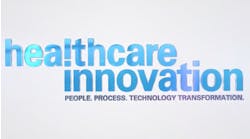Each year, at least 1.7 million adults in America develop sepsis and nearly 270,000—or 16 percent of people with sepsis—die as a result, according to the Centers for Disease Control and Prevention. What’s more, the Agency for Healthcare Research and Quality (AHRQ) lists sepsis as the most expensive condition treated in U.S. hospitals, as people with sepsis are two to three times more likely to be readmitted to the hospital than people with many other conditions, including heart failure, pneumonia, and chronic obstructive pulmonary disease. And, readmissions due to sepsis are also more expensive than readmissions due to any of these other conditions.
Given all of this, hospitals and health systems are supremely motivated to lower their sepsis mortality rates—and to do so quickly. In Virginia, the statewide sepsis mortality rate in Virginia is 12.7 percent, but provider executives know that even that figure isn’t nearly low enough. At Augusta Health, an independent, community-owned hospital in Fishersville, Va., clinical and business leaders knew they had to take swift action.
Knowing that there are four traditional criteria to identify developing sepsis—a temperature greater than 38°C, a heart rate greater than 90, a respiratory rate greater than 20 and an abnormal white blood cell count—as well as factoring in that early detection of sepsis is critical to decreasing mortality, Augusta Health took to internally developing a sepsis team and taskforce to identify ways to improve the outcomes for patients with sepsis.
“In general, we just wanted to take advantage of artificial intelligence [AI] capabilities to improve the health of our patients. The clinical area was a great place to start. Of course, sepsis isn’t a new thing, but in healthcare there are certain conditions that come to light and more emphasis is placed on them,” says Penny Cooper, a data scientist at Augusta Health.
The task force group began with a retrospective study of the data, which Cooper then used to develop an automated process that takes live data from medical systems each hour—inclusive of EHR information and other essential vital data—analyzes and compiles the data, and then assigns each patient a score. If the score is above a specific threshold, an alert is sent through a communication system from Vocera to the staff caring for that patient. The staff then can immediately go to the patient, screens for sepsis, and if identified, begins early intervention, according to hospital officials.
What’s more, Augusta Health has been using a nurse call system from Rauland, which aligns patient beds with specific nurses. When the patient is alerted for sepsis screening the nurse assigned to that patient gets an alert on his or her Vocera badge.
Through this process, August Health has gotten its sepsis mortality rate down to 4.76 percent, and officials attest that 282 lives have been saved by early intervention. "And that is just in this community,” Cooper notes, explaining that the figure is determined by subtracting the actual mortality rate from the expected rate. The early alert system earned Augusta the 2018 Health Quality Innovator recognition for Virginia.
Cooper does believe that the process is scalable for other organizations across the U.S. that are looking to do innovative work in this area.
“If you break down the process itself, we are doing data extractions from the Rauland bed system for identifying patients, and that bed system is fed by HL7 messaging, which is the same patient identification that’s in our EHR,” explains Cooper. “So we extract that data, we extract the clinical data based on the latest vital information, we do the analysis in the background, and then we assign variables to the patients, to the charge nurse, and to the attending nurse. Based on those variables, the Vocera alerts go out. When you break it down, it is simplistic in nature. We had the curiosity and the talent in-house to get this done,” she contends.
Cooper further notes that by developing the alert system internally—rather than leveraging external products from vendors that often require consulting help, and which can be pricey—the data science team inside August Health was able to the bring it all together and implement it quickly and efficiently. “Some things can be improved upon, sure, but the numbers of live saves speaks for itself. This is working,” Cooper says.


